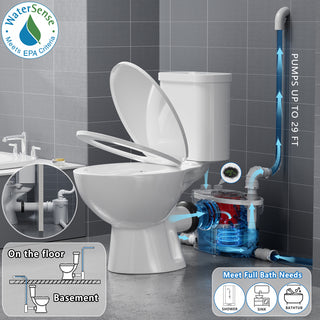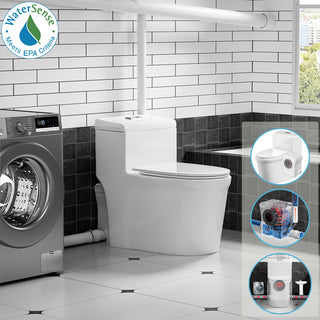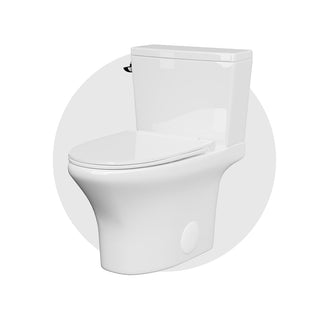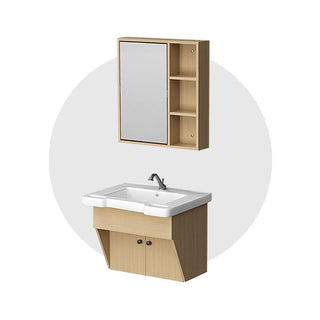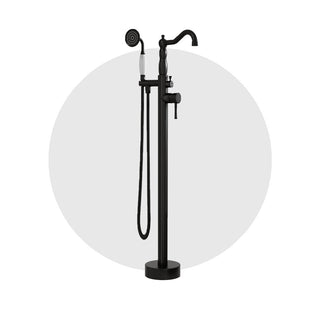Total Time: 2 Hours
Skill Level: Intermediate
Estimated Cost: $20–$50
Tools Needed: Flange repair kit (includes new flange, bolts, and wax ring), adjustable wrench, screwdriver, putty knife/paint scraper, measuring tape, towels/old rags
1. What Is a Toilet Flange?
A toilet flange is a critical component that connects the base of the toilet to the waste pipe. It is typically made of PVC, cast iron, or stainless steel and is secured to the floor with screws. The flange ensures the toilet remains stable and provides a sealed connection to the waste pipe.
Toilet flanges are usually used in conjunction with a wax ring to prevent leaks and odors. If the flange is damaged or improperly installed, it can lead to a wobbly toilet, leaks, or even water damage and floor corrosion. Ensuring proper installation and maintenance of the flange is essential.
2. When Should You Replace a Toilet Flange?
- Water Leaks Around the Base: If you notice pooling water, especially dirty water, near the base of your toilet after flushing, the flange may need replacement.
- Wobbly Toilet: A toilet that shifts or wobbles could indicate a damaged flange or loose bolts.
- Persistent Odors: Lingering bad smells in the bathroom may mean the flange's seal has broken, allowing gases from the waste pipe to escape.
3. Step-by-Step Guide to Replacing a Toilet Flange
Step 1: Turn Off the Water and Empty the Toilet
- Shut off the water supply valve connected to the toilet tank.
- Flush the toilet to drain as much water as possible from the tank and bowl.
- Use a sponge or towel to soak up any remaining water to keep the work area dry.
Step 2: Remove the Tank (For Two-Piece Toilets)
- Lay a towel on the floor to protect it.
- Locate the bolts at the base of the tank and loosen them with an adjustable wrench.
- Carefully lift the tank and place it on the towel.
Step 3: Remove the Toilet
- Pry off the bolt caps at the base of the toilet using a screwdriver.
- Unscrew the mounting bolts with an adjustable wrench.
- Gently rock the toilet back and forth to break the wax ring seal, then lift it off the flange and place it on a towel or old rags.
Safety Tip: Toilets can weigh 70–120 lbs. Seek assistance to lift it safely.
Step 4: Remove the Old Flange
- Plug the waste pipe opening with a towel or rag to block odors and prevent debris from falling in.
- Use a putty knife or scraper to clean off the old wax ring from the base of the toilet and the flange.
- Remove the screws or bolts securing the old flange.
Note: If the flange is metal or tightly adhered to the waste pipe, consult a licensed plumber to avoid damaging the pipe.
Step 5: Purchase the Correct Replacement Flange
- Take the old flange to a hardware store to find a matching replacement.
- If buying online, measure the diameter of the waste pipe with a measuring tape to ensure compatibility.
- Confirm that the repair kit includes bolts and a wax ring, or purchase them separately if needed.
Step 6: Install the New Flange
- Align the new flange with the waste pipe and secure it to the floor with screws.
- Insert the two bolts into the flange's slots, positioning them at the 3 o'clock and 9 o'clock positions.
Step 7: Reinstall the Toilet
- Remove the rag from the waste pipe.
- Place the new wax ring on top of the flange, pressing gently around the edges without distorting it.
- Carefully lower the toilet onto the flange, aligning the bolt holes in the toilet base with the bolts in the flange.
- Press down evenly on the toilet to create a seal with the wax ring.
- Secure the toilet to the floor with washers and nuts, tightening them evenly with a wrench. Snap the bolt caps back on.
- For two-piece toilets, reattach the tank to the toilet bowl.
Step 8: Test the Toilet
- Reconnect the water supply line to the tank and turn the valve back on.
- Flush the toilet and observe for any leaks around the base.
- If the floor remains dry and the toilet is stable, congratulations—you’ve successfully replaced the flange!
Tips for Success
Replacing a toilet flange is a manageable DIY project with the right tools and patience. However, if you encounter difficulties or are unsure of any steps, consult a professional plumber to avoid causing further damage.
Proper maintenance and timely repairs will extend the life of your toilet and keep your bathroom clean and odor-free.


